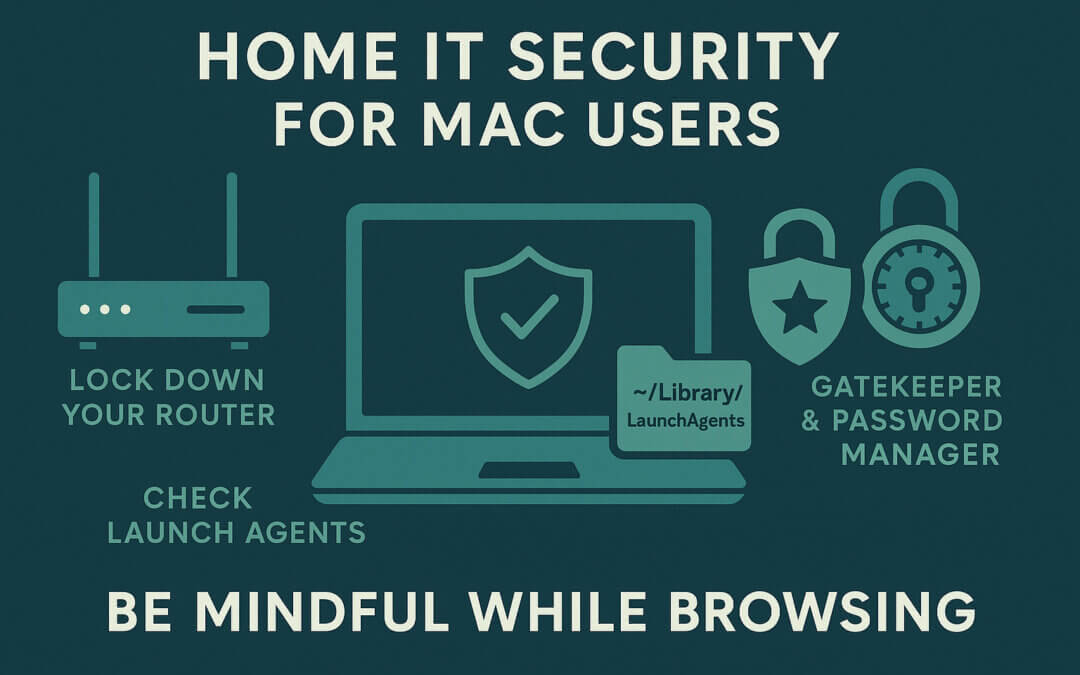For Mac users who want strong digital hygiene at home – without turning into full-time sysadmins.
Whether you’re on a Mac Pro, Mac mini, or a MacBook: here’s how to lock it down without locking yourself out.
📡 1. Secure Your Wi-Fi Router
You don’t need to have a Fritzbox – the following principles apply to any decent router:
- Keep firmware updated – always run the latest stable version from your router manufacturer
- Change the admin interface password to something long and unique
- Disable remote management (often called “Remote Access” or “WAN Access”)
- Use WPA2 or WPA2/WPA3 encryption for Wi-Fi
- Disable WPS – it’s outdated and insecure
- Optionally: restrict Wi-Fi access to known MAC addresses for an extra layer
- Turn off UPnP unless you explicitly need it (e.g. for gaming consoles or media servers)
💻 2. Harden Your macOS System
macOS is secure by default – but only if you keep the basics active and the bloat out.
- Enable the built-in firewall:
Use the commandsudo /usr/libexec/ApplicationFirewall/socketfilterfw --setglobalstate on - Gatekeeper should be enabled:
Check withspctl --status– you should seeassessments enabled - Review and clean autostart entries:
Check~/Library/LaunchAgents/and/Library/LaunchDaemons/, remove what you don’t use - Use
launchctl listto see what’s currently running in the background
🔑 3. Accounts and Permissions
- Use an admin account only if you know what you’re doing
- Create standard accounts for family members, kids, or guests
- Keep the root account disabled (it’s off by default in macOS and that’s a good thing)
- Always set a proper password – long, personal, easy to type but hard to guess
🧰 4. Backups Done Right
- Use Time Machine with a local drive – simple and effective
- Pair it with a synced cloud account (Dropbox, iCloud, etc.)
- Encrypt external drives only if performance is acceptable (skip it for slow HDDs if needed)
- Don’t rely on cloud-only backups – redundancy wins
🔐 5. Passwords and Access
- Use Bitwarden or any serious password manager
- Your master password should be long and non-negotiable
- Activate 2FA (two-factor authentication) where possible
- Don’t reuse passwords, ever – that’s the root of most breaches
🌐 6. Browser and Web Behavior
- Use Brave, Firefox with uBlock Origin, or another privacy-conscious browser
- Avoid unnecessary browser extensions
- Don’t browse logged in as admin – you never know when a rogue script appears
- Never click “Your system is infected” banners. Really.
🦠 7. Antivirus: Optional, But Not Useless
- macOS already includes built-in protection (XProtect, MRT)
- Still, using Bitdefender or another non-intrusive AV makes sense if:
- You handle email attachments
- You use USB sticks
- You want an extra layer of peace of mind
📱 8. Don’t Overcomplicate It
The best security is the kind that works quietly in the background.
- Don’t install what you don’t need
- Don’t chase “enterprise-grade” if your use case is “Netflix and shell scripts”
- Do review things every now and then – but don’t obsess daily
🧘♂️ Final Word
Security isn’t about locking everything down. It’s about knowing your risks and reducing attack surfaces – not killing usability in the process.
With a bit of intention and a few good habits, your Mac can be quietly rock-solid in a noisy digital world.

